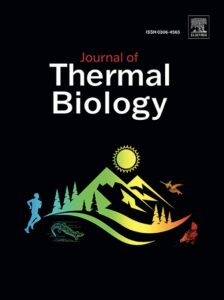Publications

Relation between skin temperature and muscle stiffness in masters athletes: Effect of specific training adaptation
Authors: Jakub Grzegorz Adamczyk 1, Bartlomiej Michalak 1, Anna Kopiczko 2, Karol Gryko 3, Dariusz Boguszewski 4, Marek Popowczak 5, Lukasz Gutkowski 1, Robert Gajda 6, 7
Affiliations:
- Department of Theory of Sport, Jozef Pilsudski University of Physical Education in Warsaw, Marymoncka 34 St., 00-968, Warsaw, Poland
- Department of Human Biology, Jozef Pilsudski University of Physical Education in Warsaw, Marymoncka 34 St., 00-968, Warsaw, Poland
- Department of Team Sport Games, Jozef Pilsudski University of Physical Education in Warsaw, Marymoncka 34 St., 00-968, Warsaw, Poland
- Department of Individual Sports, Jozef Pilsudski University of Physical Education in Warsaw, Marymoncka 34 St., 00-968, Warsaw, Poland
- Faculty of Physical Education and Sport, Wroclaw University of Health and Sport Sciences, I.J. Paderewskiego 35, 51-612, Wroclaw, Poland
- Center for Sports Cardiology, Gajda-Med Medical Center in Pułtusk, 06-100, Pultusk, Poland
- Department of Kinesiology and Health Prevention, Jan Dlugosz University, 42-200, Czestochowa, Poland
Journal: Journal of Thermal Biology - August 2024, Volume 124, Article no. 103952 (DOI: 10.1016/j.jtherbio.2024.103952)
-
Field & Applications:
- Sport
- Gerontology / Ageing
- Muscle development / Performance
- Muscle symmetry
Aging process is correlated with negative changes in muscles properties such as their thermal responsiveness and stiffness. At the same time masters athletes are often considered as an exemplars of successful aging.
Taking this into account, the aim of the study was to establish thermal portrait of lower limbs in Masters Athletes in Track & Field competing in 200 m race as well as to find out the effect of exercise on muscle stiffness. Thermal images and myotonometry were applied at restin state and immediately after the race.
Indoor sprint in Masters athletes did not cause significant skin temperature changes. Only assymetries were found for Biceps femoris muscle (left vs right before p = 0,0410; after p = 0,046). Gastrocnemius was the most responsive area for sprinting in terms of muscle stiffness. Some specific adaptations to sprint were found.
Masters athlete’s thermal profile of lower extremities was generally characterized by symmetry. Maximal exertion did not result in an increase in muscle stiffness among the athletes, suggesting the positive influence of sports training in aging athletes.
Keywords: masters athletes, performance, thermal portrait, muscle stiffness
Thermal portrait identified in the study demonstrated the impact of the starting effort in the 200 m race on skin temperature in leading Masters category athletes. Immediately after competition, the Tsk of the master athletes slightly decrease on the anterior and posterior view, however those reductions were not significant for almost all the regions of interest. Moreover the athlete’s thermal profile is characterized by symmetry. Maximal exertion did not result in an increase in muscle stiffness among the athletes, suggesting the positive influence of sports training in Masters athletes as a way of limiting the negative effects of aging.


